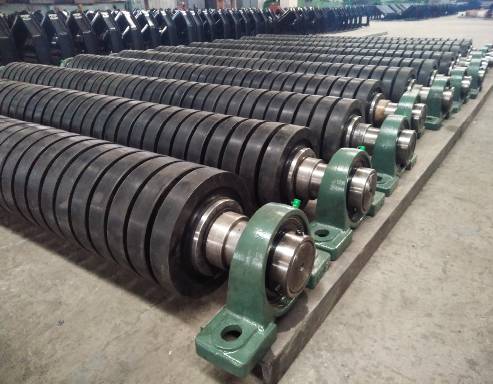 Afrikaans
Afrikaans  Albanian
Albanian  Amharic
Amharic  Arabic
Arabic  Armenian
Armenian  Azerbaijani
Azerbaijani  Basque
Basque  Belarusian
Belarusian  Bengali
Bengali  Bosnian
Bosnian  Bulgarian
Bulgarian  Catalan
Catalan  Cebuano
Cebuano  Corsican
Corsican  Croatian
Croatian  Czech
Czech  Danish
Danish  Dutch
Dutch  English
English  Esperanto
Esperanto  Estonian
Estonian  Finnish
Finnish  French
French  Frisian
Frisian  Galician
Galician  Georgian
Georgian  German
German  Greek
Greek  Gujarati
Gujarati  Haitian Creole
Haitian Creole  hausa
hausa  hawaiian
hawaiian  Hebrew
Hebrew  Hindi
Hindi  Miao
Miao  Hungarian
Hungarian  Icelandic
Icelandic  igbo
igbo  Indonesian
Indonesian  irish
irish  Italian
Italian  Japanese
Japanese  Javanese
Javanese  Kannada
Kannada  kazakh
kazakh  Khmer
Khmer  Rwandese
Rwandese  Korean
Korean  Kurdish
Kurdish  Kyrgyz
Kyrgyz  Lao
Lao  Latin
Latin  Latvian
Latvian  Lithuanian
Lithuanian  Luxembourgish
Luxembourgish  Macedonian
Macedonian  Malgashi
Malgashi  Malay
Malay  Malayalam
Malayalam  Maltese
Maltese  Maori
Maori  Marathi
Marathi  Mongolian
Mongolian  Myanmar
Myanmar  Nepali
Nepali  Norwegian
Norwegian  Norwegian
Norwegian  Occitan
Occitan  Pashto
Pashto  Persian
Persian  Polish
Polish  Portuguese
Portuguese  Punjabi
Punjabi  Romanian
Romanian  Russian
Russian  Samoan
Samoan  Scottish Gaelic
Scottish Gaelic  Serbian
Serbian  Sesotho
Sesotho  Shona
Shona  Sindhi
Sindhi  Sinhala
Sinhala  Slovak
Slovak  Slovenian
Slovenian  Somali
Somali  Spanish
Spanish  Sundanese
Sundanese  Swahili
Swahili  Swedish
Swedish  Tagalog
Tagalog  Tajik
Tajik  Tamil
Tamil  Tatar
Tatar  Telugu
Telugu  Thai
Thai  Turkish
Turkish  Turkmen
Turkmen  Ukrainian
Ukrainian  Urdu
Urdu  Uighur
Uighur  Uzbek
Uzbek  Vietnamese
Vietnamese  Welsh
Welsh  Bantu
Bantu  Yiddish
Yiddish  Yoruba
Yoruba  Zulu
Zulu Key Elements and Functions of Conveyor Systems Explained
Components of a Conveyor System An Overview
Conveyor systems play a pivotal role in modern material handling, providing efficient means of transporting goods and products within various industries, from manufacturing to logistics. Understanding the core components of a conveyor system is essential for optimizing performance, ensuring safety, and minimizing maintenance costs. This article delves into the key components of conveyor systems, elucidating their functions and importance.
1. Frames and Structures
At the foundation of every conveyor system lies its frame. The frame provides structural integrity and support for all other components. Typically made from steel, aluminum, or heavy-duty plastic, the frame must be robust enough to withstand the weight of the materials being transported while maintaining stability during operation. The design and durability of the frame are critical, as they directly affect the system’s overall performance and lifespan.
2. Belts
Conveyor belts are perhaps the most recognized components of conveyor systems. They serve as the primary medium for transporting goods. Depending on the application, belts can be made from various materials, including rubber, plastic, or metal. The choice of material depends on the nature of the products being transported and the working environment. For example, rubber belts are ideal for heavy loads, while modular plastic belts are suitable for producing products requiring frequent cleaning.
3. Drive Mechanisms
.
Drive mechanisms are crucial for operating conveyor systems. These systems are typically powered by electric motors that provide the necessary force to move the conveyor belt. The drive mechanism includes components such as pulleys, chains, and gears that work together to transfer power effectively. Selecting the right motor and drive design is vital for ensuring that the conveyor can handle the required load and operate efficiently.
components of a conveyor system

4. Rollers and Idlers
Rollers and idlers are essential for supporting the conveyor belt and enabling smooth movement. Rollers are strategically placed beneath the belt to minimize friction, while idlers help maintain proper tension in the belt. Different types of rollers, such as return rollers and impact rollers, serve specific purposes, from reducing wear and tear on the belt to absorbing shock from heavy loads. The quality and alignment of rollers significantly affect the overall efficiency of the conveyor system.
5. Sensors and Controls
Modern conveyor systems are often equipped with sensors and control systems that enhance their functionality and safety. Sensors can detect the presence of items on the belt, monitor speed, and ensure proper alignment. Control systems allow operators to adjust the conveyor's speed and automation, facilitating integration with other machinery or processes. Such enhancements not only improve operational efficiency but also provide data for analyzing performance and identifying potential issues.
6. Safety Features
Safety is paramount in conveyor system design. Various safety features, such as emergency stop buttons, protective guards, and overload sensors, help prevent accidents and injuries. Ensuring that operators are trained in safety protocols and that the system is equipped with necessary safety equipment is crucial for creating a safe working environment.
Conclusion
In conclusion, understanding the components of a conveyor system is vital for businesses that rely on material handling. Each component, from the frame and belts to the drive mechanisms, sensors, and safety features, plays a unique role in ensuring efficient and safe operation. By investing in high-quality components and adhering to best practices in maintenance and safety, organizations can optimize their conveyor systems, enhancing productivity and minimizing operational risks. As industries continue to evolve, so too will conveyor technology, making it essential for businesses to stay informed about emerging trends and innovations in this critical area of material handling.





























